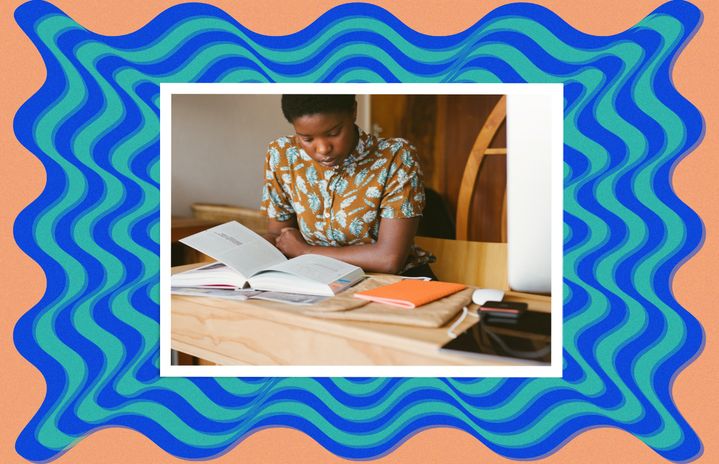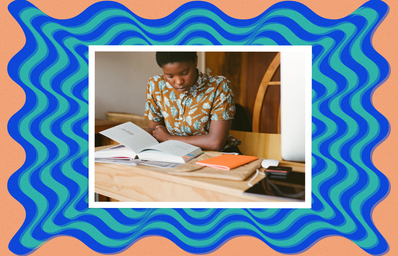The Prophets by Robert Jones Jr. (2021) follows the queer relationship of two enslaved people, Isaiah and Samuel, on a Deep South plantation referred to as Empty. When Amos, an older fellow slave, begins spreading Christianity and the word of a singular God across the plantation, many slaves begin to turn against the pair.
The novel is a necessary act against the erasure of queer Black history, but it’s by no means an easy read. The Prophets explores rape culture on plantations, forced breeding, violence, and brutality. It’s a heavy slow-burn that incorporates the points of view of various slaves and members of the Halifax family, who own the plantation. The novel also interweaves a somewhat distracting subplot that explores the lives of Samuel and Isisah’s Kosongo ancestors into the narrative.
Much of The Prophets focuses on the beautiful, sacred relationship between Samuel and Isaiah (commonly referred to as “The Two of Them”). But perhaps the most intriguing character to read about is Maggie, who evokes ancestral spirits, utilizes poisons, and finds small ways to fight back against her oppressors and exert some shred of agency. Maggie emerges as a leader amongst the women, both spiritual and magical, and plays an integral role in the conclusion of the novel.
Maggie: Poison & Concoctions
Maggie is an enslaved woman that works in the home of Paul and Ruth Halifax. Maggie’s strong voice comes through right away, from the moment she declares: “It [The world] had tried to make her bitter about herself. It had tried to turn her own thinking against her. It had tried to make her gaze upon her reflection and judge what she saw as repulsive. She did none of those things.”
Although Maggie has a cynical worldview from her life experiences, (Maggie dislikes men, women who give birth, and children) she refuses to see herself as anything less than a worthy, beautiful woman. Maggie looks for ways to exert “minuscule power” and attack her enslavers. Much of her resistance comes from physical substances, ancestral tradition, and knowledge of the natural world.
At the beginning of the novel, Maggie contemplates adding something to the biscuits she is preparing for the Halifax’s breakfast. She recalls putting snake venom in the family’s sweet tea and heel-ground glass dust in the hominy grits. According to Maggie, “Cantankerous bellies and the rare bloody stool were pleasant, reassuring results.”
Maggie also tells the reader about when Ruth forced her to breastfeed her newborn baby. Unable to bear the incredible violation, Maggie rubbed nightshade petals on her nipples and killed the baby. Maggie tops off her “magic” with a gentle humming that she knows makes people uncomfortable. James, the overseer, is so petrified of Maggie that he cannot even say her name and avoids the Big House at all costs.
“But minuscule power was still power.”
Maggie, The Prophets
Maggie: Ancestral tradition
Later in the novel, the reader sees Maggie utilize her skills with poisons, concoctions, and spirituality to help the other enslaved people at Empty. In a horrific moment of brutality, Samuel and Isaiah are whipped and chained to a wagon. Then, they are forced to pull the wagon around the plantation like cattle. To help heal the injured young men, Maggie gathers a circle of five women to complete a traditional ritual from a long line of women. The process involves weeping willow leaves, comfrey, yarrow, huckleberries, stalks of lavender, and breaking a rooster’s neck. Maggie is the leader of the circle and evokes their ancestors to heal Samuel and Isaiah. At the end of the ritual, she watches them come up from the ground.
A few chapters later, Maggie feels a change in the night air (a theory supported by her pig bones) and suspects that Amos has decided to out Samuel and Isaiah’s relationship to Paul. Maggie evokes ancestral tradition once again and tries to prevent Amos from entering the Big House. Maggie uses her pig bones, draws a circle with an X inside, and throws rock salt on the ground. When these methods fail, she slaps him, too. Maggie’s determination to help the two young men at grave personal risk, yet again, is both admirable and brave.
By the end of the novel, Maggie’s “minuscule power” evolves to forever change Empty. After the public hanging and burning of Samuel, Maggie retaliates by killing Paul (and likely Ruth, too) and setting fire to the entire plantation and Big House. She tells the reader, “The sizzle filled the air, and hearing it gave her over to herself, made her feel that her body was, finally, her own.” Surrounded by smoke and ashes, Maggie casts her “last spell” and inspires the slaves to rebel against the forces that have kept them repressed for far too long.
“Her body was, finally, her own.”
Maggie, The Prophets
Witchcraft & Spirituality
TikTok and other forms of social media have led to increased interest in the spiritual practice of witchcraft in recent years. The hashtag #WitchTok has attracted billions of viewers to a community all about reading, research, crystals, spells, and other forms of modern magic. Lots of millennial and Gen Z Black women have embraced witchcraft, spirituality, and African traditions as important aspects of feminism.
Many of Maggie’s actions involving poison, the properties of plants, and ancestral rituals feel reminiscent of rising modern ideas of witchcraft and nature-based magic. But Maggie would not have viewed herself as a “witch” or her actions as “witchcraft.” Before the Atlantic slave trade, witchcraft was not a prevalent or widespread belief in Africa. In fact, witchcraft was dying down in Western Europe and the United States.
When many people think of “witchcraft” they immediately associate the idea with the Devil, burning at the stake, cauldrons, and broomsticks, or the Salem Witch Trials. Before the Atlantic slave trade, the African idea of a “witch” was not a person who had made a pact with the Devil, as spread by the American and Western European witch craze.
Instead, as described by Diana Paton, many Africans believed that the dead could influence the lives of the living. Individuals with knowledge of the spiritual world could use or manipulate spiritual knowledge as a way to attack or protect others. Some people could use these methods to “accrue illegitimate wealth or power at the expense of other members of the community.”
As a result, protection against “spiritual attack was a necessary aspect of daily life” for members of many African communities. Physical substances could have powerful effects based on how they were consumed, touched, or where they were placed “in proximity to a person.” In fact, the Ibo term usually translated with “sorcery” literally means “hitting with poison.” Poisons and other substances are an important part of traditional African spiritual attacks and protections.
Enslavement & Historical Trauma
A 2018 research study conducted by Boris Gershman investigated the links between the regions affected most by the Atlantic slave trade and modern belief in witchcraft. In response to the rising demand for slaves, witchcraft accusations and trials became an important tool used by slave traders for convicting and enslaving people across Sub-Saharan Africa. As a result, many individuals turned against members of their own community. Sometimes, the accused was killed, and their entire family was shipped away from home and enslaved.
Gershman’s study shows that in Sub-Saharan Africa, regions more heavily exposed to the Atlantic slave trade and slave labor are more likely to believe in witchcraft today. Modern African ideas of witchcraft seem to have developed as a way to describe the horrors, traumas, and confusion surrounding the slave trade. Associating these experiences with spiritual affliction or religious malevolence, enslaved people incorporated techniques regarding spirituality from Europeans, Indigenous Americans, and other Africans living in the Americas.
Many Africans feared cannibalism (the consumption of both body and spirit) and being eaten by slave traders. From their perspective, they watched friends and family shipped away and never returned home. As a result, many enslaved people used “whatever means were available to protect themselves spiritually in a terrifying world.” Traditional African beliefs were not erased because of enslavement; they were shifted and modified to fit a new world of horrors.
Modern African witchcraft beliefs can be considered “collective ‘memories’ of this historical trauma.” Witchcraft as we think of it today emerged as a coping mechanism used by communities to justify inexplicable acts of horror and brutality. In this way, it is clear that deep-rooted trauma can persist to shape the core belief systems of communities.
Conclusion
Reading Maggie under the lens of witchcraft, spiritual attacks, poison, and enslavement is fascinating and has added extra layers of historical context to my reading of The Prophets. The novel is an important act against queer erasure (because of course, there were gay slaves!), and the imaginative exploration of what a romance between male slaves looked like would have been more than enough to carry the novel. Through Maggie, Robert Jones Jr. also sparks deep interest in the effects of enslavement on belief systems, justifications, and modern witchcraft. If I learned anything from reading The Prophets, it’s that the importance of the “slavery narrative” has not expired. Without a doubt, writers have just scratched the surface of what can be explored.
Sources
- The Prophets, Robert Jones Jr. (2021)
- “Witchcraft, Poison, Law, and Atlantic Slavery,” Diana Paton (2012)
- “Witchcraft Beliefs as a Cultural Legacy of the Atlantic Slave Trade: Evidence from Two Continents,” Boris Gershman (2018)
This article is part of a series, #FeministFriday, where Chloe Hummel seeks to highlight standout feminists making a difference in the world right now. Stay tuned!


